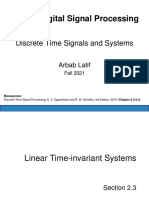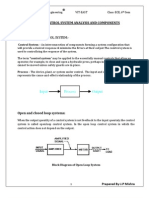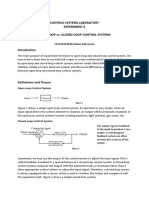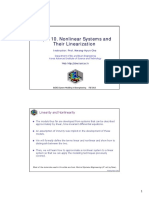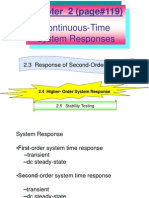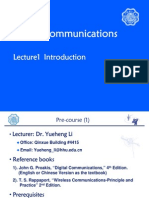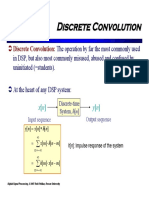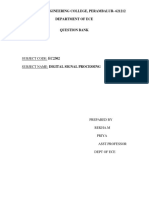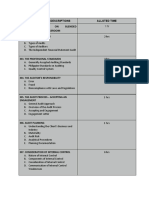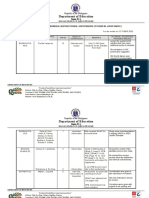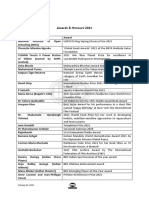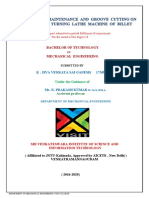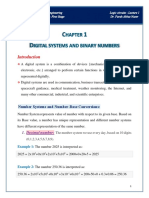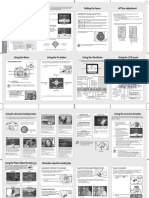0% found this document useful (0 votes)
483 views72 pagesLecture+10-12 (Sampling and Reconstruction) PDF
Periodic sampling is the process of converting a continuous-time signal to a discrete-time signal by taking samples of the continuous signal at regular time intervals. The Shannon Sampling Theorem states that a continuous signal can be reconstructed perfectly from its samples if the sampling frequency is greater than twice the highest frequency component of the original signal. If the sampling frequency is below the Nyquist rate, aliasing occurs and different signals become indistinguishable when reconstructed from samples. Interpolation techniques can be used to increase the sampling rate of a discrete signal during reconstruction.
Uploaded by
Talha MazharCopyright
© © All Rights Reserved
We take content rights seriously. If you suspect this is your content, claim it here.
Available Formats
Download as PDF, TXT or read online on Scribd
0% found this document useful (0 votes)
483 views72 pagesLecture+10-12 (Sampling and Reconstruction) PDF
Periodic sampling is the process of converting a continuous-time signal to a discrete-time signal by taking samples of the continuous signal at regular time intervals. The Shannon Sampling Theorem states that a continuous signal can be reconstructed perfectly from its samples if the sampling frequency is greater than twice the highest frequency component of the original signal. If the sampling frequency is below the Nyquist rate, aliasing occurs and different signals become indistinguishable when reconstructed from samples. Interpolation techniques can be used to increase the sampling rate of a discrete signal during reconstruction.
Uploaded by
Talha MazharCopyright
© © All Rights Reserved
We take content rights seriously. If you suspect this is your content, claim it here.
Available Formats
Download as PDF, TXT or read online on Scribd
/ 72




















